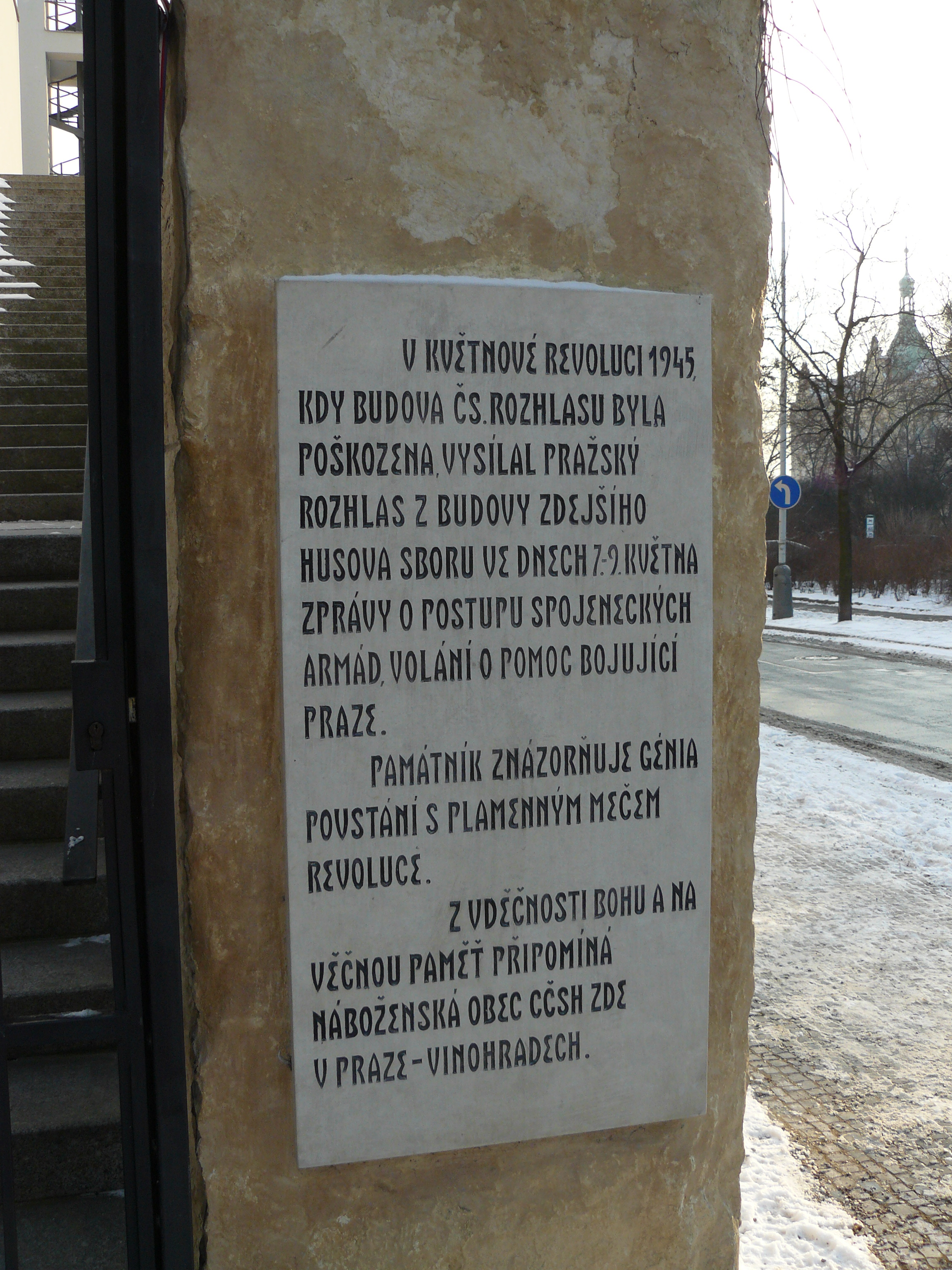|
Hus' House (Vinohrady)
The Hus Congregational House, or Husův sbor, is a Hussite church in Dykova Street in Prague 10. It was completed in 1935 as part of a multi-functional development by architect Pavel Janák in the constructivist style. The tall, six-storey minimalist tower and belfry carries a 700 kg copper chalice as a symbol of the Hussite Church. The tower was briefly used to create an alternative radio station during the Prague uprising in 1945. History The Hus Congregational House was built between 1930 and 1935 to architect Pavel Janák's constructivist design in Dykova Street in Prague 10 for a Hussite congregation. The land near the old water works had been purchased in 1925, and the Church commissioned Janák to create a novel design for the church. Janak's first design in 1929 was accepted by the Church elders but rejected by the town planners. The following year's design included an apartment building, a theatre and a six-storey tower. By this time the symbolic foundation ston ... [...More Info...] [...Related Items...] OR: [Wikipedia] [Google] [Baidu] |
Czechoslovak Hussite Church
The Czechoslovak Hussite Church ( cs, Církev československá husitská, ''CČSH'' or ''CČH'') is a Christian church that separated from the Catholic Church after World War I in former Czechoslovakia. Both the Czechoslovak Hussite Church and Moravian Church trace their tradition back to the Hussite reformers and acknowledge Jan Hus (John Huss) as their predecessor. It was well-supported by Czechoslovakia's first president, Tomáš Garrigue Masaryk, who himself belonged to the Evangelical Church of Czech Brethren. The Czechoslovak Hussite Church describes itself as neo-Hussite. History Both the Czechoslovak Hussite Church and Moravian Church trace their tradition back to the Hussite reformers and acknowledge Jan Hus (John Huss) as their predecessor. The forerunner of the CČSH was the Jednota (Union of the Catholic Clergy), which was founded in 1890 to promote modernist reforms in the Roman Catholic Church, such as use of the vernacular in the liturgy and the adoption of volu ... [...More Info...] [...Related Items...] OR: [Wikipedia] [Google] [Baidu] |
